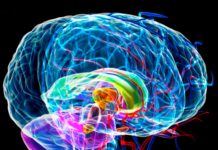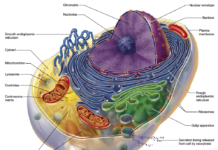By Jim English
Oranges are among the most valued and highly consumed variety of fruit. Native to southeastern Asia, oranges were originally imported into Arabia in the 9th Century. By the 12th Century oranges were widely cultivated in Spain and exported throughout Europe. While the modern round orange is valued for its sweet tasting juice and pulp, early versions were of the bitter-tasting variety known as Sour Orange (Citrus aurantium). Over the centuries cultivation of bitter orange has largely been replaced with juicier, sweeter versions, such as the Valencia orange.
Though displaced by tastier varieties, researchers have shown great interest in the lowly bitter orange after recently discovering that Citrus aurantium contains a number of natural alkaloids that safely increase weight loss. Best of all, Citrus aurantium does so without many of the negative side effects to the cardiovascular and central nervous systems commonly experienced with weight-control agents such as ma huang (ephedra).
An Ancient Cure
Over the centuries bitter oranges were highly valued for their food and medicinal properties. In ancient China unripened bitter oranges were used to make zhi shi, an herbal extract used to treat constipation, improve energy (chi) and to calm nerves in cases of insomnia and shock. In the Amazon rainforest indigenous tribes used bitter orange tea as a laxative and to relieve nausea, stomach pains, indigestion, gas and constipation.
In Western medicine the health benefits of oranges were first noted in 1746 when the noted Scottish naval surgeon James Lind demonstrated that consuming citrus fruits, such as orange and limes, completely prevented scurvy, a deadly disease that killed tens of thousands of New World sailors. What Lind didn’t know at the time was that oranges and related citrus fruits are a rich source of, vitamin C (ascorbic acid), one of the premier antioxidants.
Adrenergic Amines
Until recently, ma huang (ephedra sinica) was considered to be one of the most effective natural weight loss agents available. At the cellular level, ephedrine, the main active ingredient in ma huang, is a powerful adrenergic agent that activates two types of cell receptors – called a alpha and beta cells – to stimulate lipolysis (the breaking down of fat into free fatty acids and glycerol) and thermogenesis (the production of body heat in the muscles and fat). Alpha- and beta-receptors are found on the surface of every cell in the body and normally respond to the stimulatory effects of the two primary adrenergic amines (nitrogen-containing compounds) produced by the body – adrenaline and noradrenaline. The specific cellular response to adrenergic amines is determined by the location, number and type of different alpha and beta-receptors – alpha-1 and-2, and beta-1, -2, and -3. In general, receptor types and their responses are described as follows:
- Alpha-1: causes constriction of arteries and potential increase in blood pressure.
- Alpha-2: affects blood pressure by constricting peripheral blood vessels, inhibits lipolysis.
- Beta-1: affects cardiac function, causes bronchodilation and dilation of blood vessels in heart and skeletal muscle.
- Beta-2: affects cardiac function, causes bronchodilation and dilation of blood vessels in heart and skeletal muscle.
- Beta-3: increases rate of fat release from body stores (lipolysis) and increases resting metabolic rate (thermogenesis).
The Alpha (and Beta) of Ephedra
While ephedra has been shown to be an effective agent for triggering thermogenesis, one of the continuing problems has been the potential for cardiovascular and central nervous system over-stimulation in certain individuals. The reason for these unwanted side effects becomes clear when one looks at the type of cell receptors targeted by ephedra. Ephedra makes contact with – and elicits responses from – both alpha- and beta-receptors. The primary benefits seen with ephedra are due to stimulation of beta-3 receptors, which causes an increase in lipolysis and thermogenesis.
Unfortunately, ephedra also stimulates the beta-1 and beta-2 receptors, potentially causing over-stimulation of the cardiovascular and central nervous systems – the classical ‘fight or flight’ response. Ephedra also stimulates both of the alpha-1 and alpha-2 receptors, which, as seen above, causes arterial constriction and increased blood pressure. Additionally, by stimulating alpha-2 receptors ephedra has the undesirable effect of blocking lipolysis – exactly the opposite effect one desires when trying to control weight.
Bitter Orange Extracts More Effective than Ephedra
Recently researchers from McGill University in Montreal isolated five adrenergic amines from bitter orange (Citrus aurantium): synephrine, N-methyl-tyramine, hordenine, octopamine, and tyramine. While these alkaloids are similar to those found in ephedra, they work on a different set of receptors to stimulate lipolysis and thermogenesis.
Laboratory tests have found that Citrus aurantium alkaloids show properties similar to ephedrine, by triggering beta-receptors. More recently, studies have shown that both octopamine and synephrine appear particularly effective in stimulating lipolysis, a postulated beta-receptor effect. Other researchers had previously revealed that synephrine was about 3.5 times as effective in stimulating lipolysis as octopamine, leading researchers to state that “the alkaloid mixture in bitter orange extract is superior to the mixture of ephedrine alkaloids in ma huang (Ephedra sinica) in terms of effects on beta-receptors in general.”
Fewer Side Effects than Ephedra
Researchers were most impressed by the fact that these amines increase lipolysis and thermogenesis without causing the elevated blood pressure, muscle disturbances, insomnia, dry mouth, heart palpitations, and nervousness sometimes caused by ephedra.
Initial studies of lean and obese volunteers measured excellent thermogenic response with a proprietary, standardized Citrus aurantium extract (Advantra Z®), without showing evidence of increased heart rate, blood pressure or central nervous system stimulation. A clinical study reported by Colker et al. also demonstrated excellent effects on weight loss with a total absence of side effects.
Thus though citrus alkaloids appear to be at least as thermogenic as the ephedrine alkaloids, they are clearly gentler than the latter and do not cause the minor side effects associated with use of Ma huang (nervousness, agitation, palpitations, increases in blood pressure). The better tolerance of the citrus alkaloids is thought to be because they do not pass so readily into the brain, and may target fat cells more specifically.
Citrus Amines Selective for beta-3 Receptors
The amines contained in ephedra – adrenaline and noradrenaline – are highly lipophilic, meaning that they are readily attracted to fats and easily cross the fatty membranes that comprise the blood-brain barrier. Once past this protective barrier, adrenaline and noradrenaline target the alpha-1 and-2 and beta-1, -2, and -3 receptors to cause amphetamine-like effects on the cardiovascular and central nervous systems believed to occur with ma huang.
By contrast, research shows that the amines found in Citrus aurantium extract make minimal contact with the alpha and beta-1 and -2 receptors, but exert their adrenergic effects by acting exclusively on beta-3 receptors to stimulate lipolysis and increase resting metabolic rate.
Sparing Lean Muscle Mass
New research suggests that by increasing lipolysis and burning stored fats as fuel, citrus extracts increase energy stores necessary for the sustained physical exertion required to tone muscle tissues. In addition, researchers believe that these dual actions of stimulating thermogenesis and lipolysis help to increase the amount of fatty acids released from fat stores, thereby sparing lean muscle tissues usually broken down during weight loss.
Summary
Citrus aurantium extract (Advantra Z¨) is an exceptional alternative to ma huang. Both safe and natural, it functions in four specific ways:
- Increasing lipolysis (breaking down fat stores to be used as fuel);
- Stimulating weight loss by enhancing thermogenesis (burning of fat);
- Increasing fuels available for physical performance; and
- Helping to spare and maintain lean muscle mass.
Additionally, Citrus aurantium extract (Advantra Z¨) has been shown to significantly increase metabolic rate in volunteers, with no evidence of cardiovascular effects after single or repeated doses. When given to obese subjects, researchers measured significant increases in rates of weight loss, due almost entirely to fat loss (a consequence of lipolysis), again with no evidence of any side effects or changes in cardiovascular parameters, making Citrus aurantium extract an exciting new addition to programs that combine diet, moderate exercise and thermogenic agents to control obesity.
References
1. Alam, S.Q., Mannino, S.J., Alam, B.S. and McDonough, K., 1995, Effect of essential fatty acid deficiency on forskolin binding sites, adenylate cyclase and cyclic AMP-dependent protein kinase activity, the levels of G proteins and ventricular function in rat heart. J. Molecul. Cellul. Cardiol., 27,1593-1604.
2. Bucci, L.R., 1994, Nutritional ergogenic aids. Nutrition in Exercise and Sport, Ed. Wolinsky and Hickson, 2nd Ed., CRC Press, Boca Raton, 306.
3. Clandinin, M.T., Cheema, S., Field, C.J. and Baracos, V.E., 1992, Impact of dietary essential fatty acids on insulin responsiveness in adipose tissue, muscle and liver. Essential Fatty Acids and Eicosanoids, Ed. Sinclair and Gibson, AOCS, Champaign, 416-420.
4. Colker, C.M., Kalman, D.S., Torina, G.C., Perlis, T. and Street, C., 1999, Effects of Citrus aurantium extract, caffeine, and St. John’s Wort on body fat loss, lipid levels, and mood states in overweight healthy adults. Curr. Ther. Res., 60,145-153.
5. Cunnane, S.C., McAdoo, K.R. and Horrobin, D.F., 1986, n-3 Essential fatty acids decrease weight gain in genetically obese mice. Brit. J. Nutr., 56, 383-393.
6. Dulloo, A.G., 1993, Ephedrine, xanthines and prostaglandin inhibitors: actions and interactions in the stimulation of thermogenesis. Int. J. Obesity, 17,S35-S40.
7. Goodman, L. and Gilman, G., 1941, The Pharmacological Basis of Therapeutics. Macmillan, New York (First Edition).
8. Goubern, M., Yazbeck, J., Senault, C. and Portet, R., 1990, Non-shivering thermogenesis and brown adipose tissue activity in essential fatty acid deficient rats. Arch. Int. Physiol. Biochim., 98,193-199.
9. Hedrei, P and Gougeon, R., 1997, Thermogenic effect of B-sympathicomimetic compounds extracted from Citrus aurantium. McGill Nutrition and Food Science Center, Royal Victoria Hospital.
10. Jones, P.J.H. and Schoeller, D.A., 1988, Polyunsaturated:saturated ratio of diet fat influences energy substrate utilization in the human. Metabolism, 37,145-151.
11. Jones, D., 1998, Citrus aurantium. All Natural Muscular Development, February 1999, 108-110, 176.
12. Kalman, D.S., 1999, Natural Fat Loss Pill, Citrus aurantium, caffeine and St. John’s Wort. Muscular Development, 6.99, 122-125.
13. Munson, P.L. (Ed.), 1995, Principles of pharmacology; basic concepts and clinical applications. Chapman & Hall, New York.
14. Pathak, B. and Gougeon, R., 1998, Thermic effect of Citrus aurantium in obese subjects. McGill Nutrition and Food Science Center, Royal Victoria Hospital.
15. Siguel, E.N. and Lerman, R.H., 1994, Altered fatty acid metabolism in patients with angiographically documented coronary artery disease. Metab. Clin. Exp., 43,982-993.
16. Takada, R., Saitoh, M. and Mori, T., 1994, Dietary gamma-linolenic acid-enriched oil reduces body fat content and induces liver enzyme activities relating to fatty acid B-oxidation in rats. J.Nutr., 124,469-474.
17. Wenke, M., Lincova, D., Cernohorsky, M. and Cepelik, J., 1967, Some aspects concerning the structure-function relationship in lipomobilizing adrenornimetics. Arch. int. Phannacodyn., 165, 53-63.
18. Yang, Y.T. and McElligott, M.A., 1989, Multiple actions of B-adrenergic agonists on skeletal muscle and adipose tissue. Biochem. J.,261,1-10.














[…] https://nutritionreview.org/2013/04/beyond-ephedra-bitter-orange-citrus-aurantium/ […]
[…] (12) https://nutritionreview.org/2013/04/beyond-ephedra-bitter-orange-citrus-aurantium/ […]
[…] https://nutritionreview.org/2013/04/beyond-ephedra-bitter-orange-citrus-aurantium/ […]
[…] https://nutritionreview.org/2013/04/beyond-ephedra-bitter-orange-citrus-aurantium/ […]
[…] been some extremely interesting studies done on bitter orange extract. One study found that bitter orange accelerated lipolysis (fat loss) by over 3.5x, compared to the powerful […]
[…] (11) https://nutritionreview.org/2013/04/beyond-ephedra-bitter-orange-citrus-aurantium/ […]
[…] https://nutritionreview.org/2013/04/beyond-ephedra-bitter-orange-citrus-aurantium/ […]